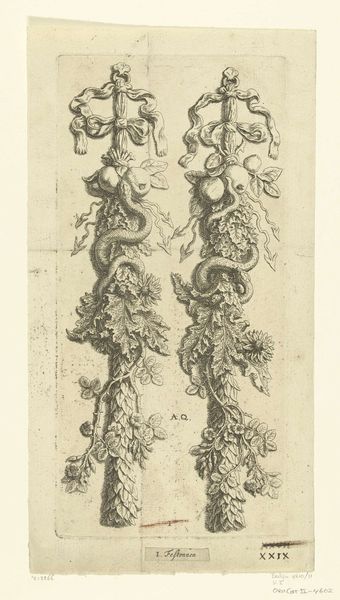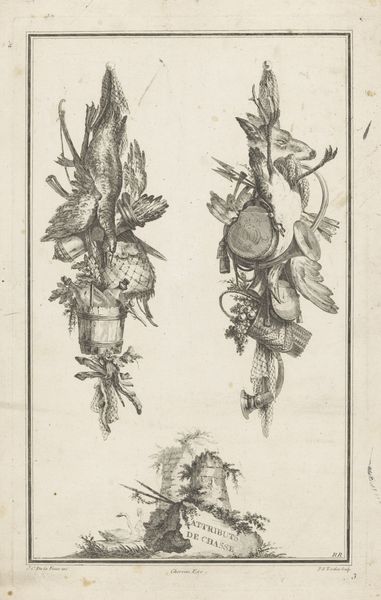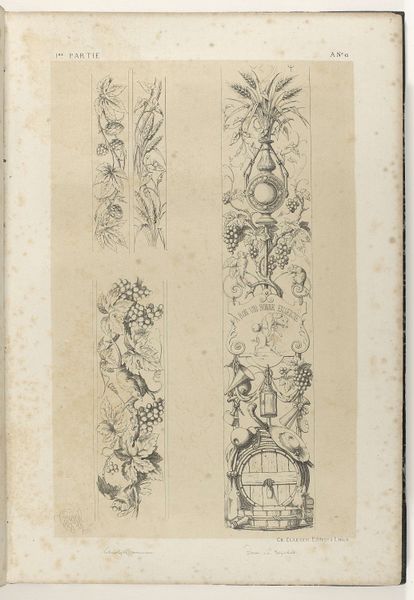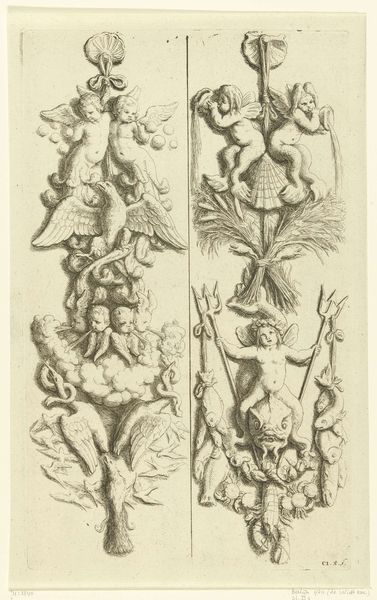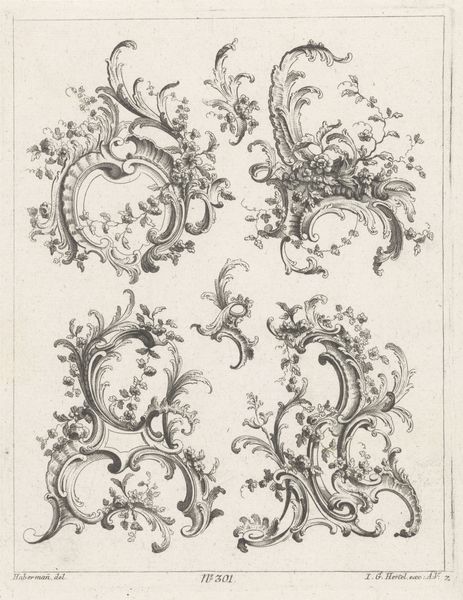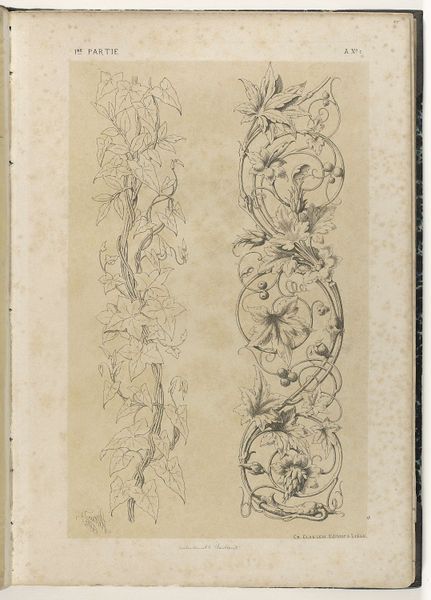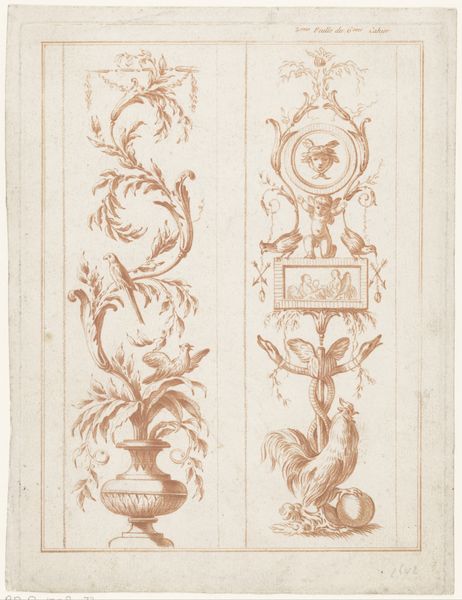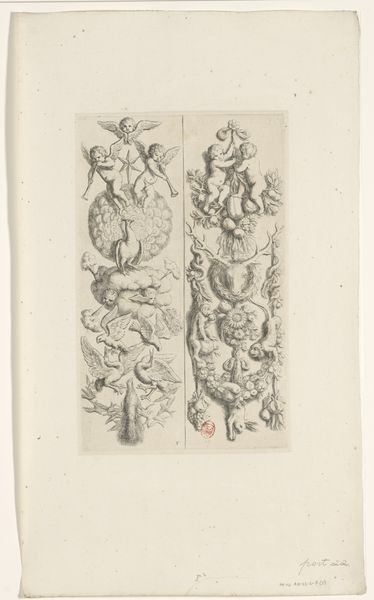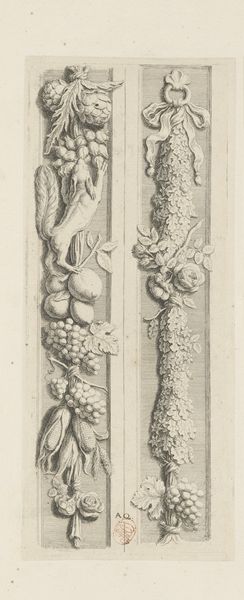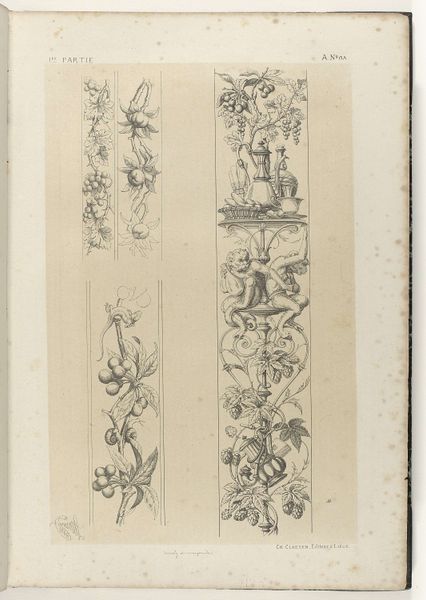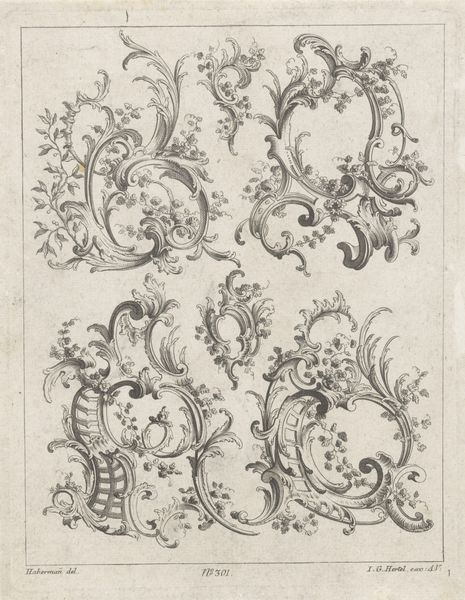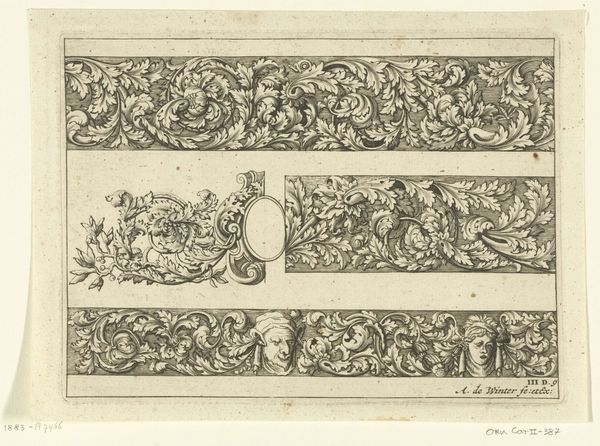
Twee pilasterfestoenen met duiven, schelpen en parelsnoeren in de noordelijke galerij van het Stadhuis op de Dam 1655
0:00
0:00
print, engraving
#
baroque
# print
#
history-painting
#
decorative-art
#
engraving
Dimensions: height 257 mm, width 128 mm
Copyright: Rijks Museum: Open Domain
Editor: Here we have Hubert Quellinus’s "Two Pilaster Festoons with Doves, Shells, and Pearl Garlands in the Northern Gallery of the Town Hall on the Dam," an engraving from 1655, now at the Rijksmuseum. The symmetry is compelling, and the detailed etching gives the impression of a classical carving. How do you read this print, looking at the larger picture of the social function of art at this time? Curator: The print gives insight into the Dutch Golden Age's aspirations and visual language. The Amsterdam Town Hall, now the Royal Palace, was designed as a testament to civic power, trade, and humanist values. Quellinus’s prints documented the building's decorations for wider circulation. This speaks volumes about the importance of public image and conveying the message of Amsterdam as a centre of power and culture, doesn't it? Editor: Absolutely! The symbolic language makes so much sense. It's amazing that something like decorative prints can serve such a politically charged purpose. But what about its appeal? I wonder about the people who consumed these images – were they aware of these nuanced references? Curator: A broad segment of society consumed prints; certainly, those aspiring to social and political influence would grasp the iconographic language. Consider the shells, doves, and garlands; these weren’t mere aesthetic choices. Each element subtly conveyed notions of peace, prosperity, and civic virtue – key themes for Amsterdam’s self-representation, reflecting ideals promoted by the ruling oligarchy. Did you see any symbolism that interests you the most? Editor: I was struck by how prints such as this disseminated these ideals, beyond those physically visiting the Town Hall. So, would you say that this print, and others like it, helped reinforce specific power structures? Curator: Precisely. The mass reproduction and distribution allowed these visuals to reach different social strata, shaping collective consciousness and reaffirming the city's desired image. It underlines how art is never politically neutral. Editor: I’ll definitely look at decorative art differently. I was so focused on just aesthetics. Thanks for broadening my perspective. Curator: And thank you. Discussing this print reminds us of the ongoing role of art in constructing and perpetuating cultural narratives.
Comments
No comments
Be the first to comment and join the conversation on the ultimate creative platform.
